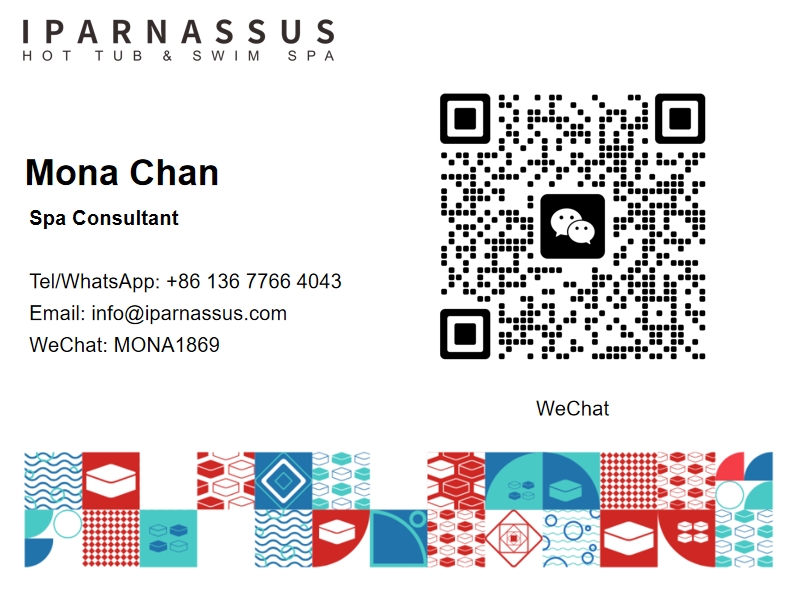Do Hot Tubs Help Sunburns?
2024-09-26 09:43:31
Sunburns can be a painful and uncomfortable experience, leaving many people searching for relief. While hot tubs are often associated with relaxation and leisure, some individuals wonder if they can also provide relief for sunburned skin. This article explores the relationship between hot tubs and sunburns, examining whether soaking in a hot tub can help alleviate the discomfort associated with sunburn.
Can a Hot Tub Soothe Sore Muscles from Sunburn?
Sunburns not only affect the skin but can also lead to muscle soreness and stiffness. The intense heat from the sun can cause inflammation and dehydration, which may result in aching muscles. Hot tubs, known for their therapeutic properties, can potentially provide relief for these symptoms.
The warm water in a hot tub can help increase blood circulation throughout the body, including the affected sunburned areas. This improved blood flow can aid in reducing inflammation and promoting healing. The buoyancy of the water also helps to take pressure off sore muscles, allowing them to relax and recover more easily.
Moreover, the jets in a hot tub can provide a gentle massage effect, which may help alleviate muscle tension and stiffness associated with sunburn. This combination of warm water and massage can be particularly beneficial for larger muscle groups that may have been exposed to excessive sun, such as the back, shoulders, and legs.
However, it's important to note that timing is crucial when using a hot tub for sunburn relief. Immediately after getting sunburned, it's best to avoid hot water as it can further irritate the skin and potentially worsen the burn. It's advisable to wait at least 24 to 48 hours after sun exposure before considering a hot tub soak, allowing the initial inflammation to subside.
When using a hot tub for muscle relief, it's essential to keep the water temperature moderate. Excessively hot water can aggravate sunburned skin and potentially lead to further dehydration. Aim for a temperature between 92°F and 98°F (33°C to 37°C) for a more comfortable and beneficial experience.
To maximize the benefits, consider adding Epsom salts to the hot tub water. Epsom salts are rich in magnesium, which can help reduce inflammation and soothe sore muscles. However, always consult the hot tub manufacturer's guidelines before adding any products to the water to ensure it won't damage the equipment or affect water chemistry.
How Long Should You Soak in a Hot Tub for Sunburn Relief?
When it comes to using a hot tub for sunburn relief, the duration of your soak is just as important as the timing and water temperature. Finding the right balance is crucial to maximize the benefits without causing further irritation to your sunburned skin.
Generally, it's recommended to limit your hot tub session to about 15 to 20 minutes when dealing with sunburn. This timeframe allows you to reap the benefits of improved circulation and muscle relaxation without risking further skin damage or dehydration. It's essential to listen to your body and exit the hot tub if you start feeling uncomfortable or if your skin begins to feel overly warm or irritated.
During your soak, pay close attention to how your skin reacts. If you notice any increased redness, pain, or discomfort, it's best to cut your session short and exit the hot tub immediately. Remember that everyone's skin reacts differently, so what works for one person may not be suitable for another.
To enhance the effectiveness of your hot tub soak, consider taking breaks between sessions. For example, you might have a 15-minute soak, followed by a 30-minute break, and then another short session if needed. This approach allows your body to adjust and prevents overexposure to the warm water.
Hydration is key when using a hot tub, especially when dealing with sunburn. The warm water can cause you to sweat and lose fluids, so it's crucial to drink plenty of water before, during, and after your soak. This helps prevent dehydration and supports your body's natural healing processes.
After your hot tub session, gently pat your skin dry with a soft towel. Avoid rubbing, as this can irritate sunburned skin. Apply a moisturizer or aloe vera gel to help lock in hydration and soothe the skin. Look for products containing ingredients like aloe vera, vitamin E, or chamomile, which are known for their skin-soothing properties.
It's worth noting that while a hot tub can provide temporary relief for sunburned muscles, it's not a cure for sunburn itself. The best approach to dealing with sunburn is prevention through proper sun protection. Always use sunscreen, wear protective clothing, and limit your exposure to direct sunlight, especially during peak hours.
Is Hydrotherapy in a Hot Tub Beneficial for Sunburn Recovery?
Hydrotherapy, the use of water for pain relief and treatment, has been practiced for centuries. When it comes to sunburn recovery, hydrotherapy in a hot tub can offer several potential benefits, making it a popular choice for those seeking relief from sunburn discomfort.
One of the primary benefits of hydrotherapy for sunburn recovery is its ability to improve circulation. The warm water in a hot tub causes blood vessels to dilate, increasing blood flow throughout the body. This enhanced circulation can help deliver nutrients and oxygen to sunburned skin more efficiently, potentially speeding up the healing process.
The buoyancy of water in a hot tub can also play a crucial role in sunburn recovery. When immersed in water, the body experiences a reduction in gravity's effects, which can help alleviate pressure on sore and inflamed areas. This weightlessness can be particularly beneficial for individuals with extensive sunburn, as it allows them to move more comfortably and reduces the strain on sensitive skin.
Hot tub jets provide a gentle massage effect, which can be incredibly soothing for sunburned skin and underlying muscles. The pulsating water can help stimulate the lymphatic system, promoting the removal of toxins and reducing inflammation. This gentle massage can also help relax tense muscles that may have become stiff due to sunburn discomfort.
Another aspect of hydrotherapy that can benefit sunburn recovery is the potential for temperature contrast therapy. While it's important to avoid extreme temperature changes when dealing with sunburn, gentle alternations between warm and cool water can help stimulate blood flow and reduce inflammation. This can be achieved by carefully adjusting the hot tub temperature or by using a cool shower after a warm soak.
The moist heat provided by a hot tub can also help address the dryness often associated with sunburn. As the skin heals from sunburn, it tends to become dry and may start peeling. The humidity created by the warm water can help hydrate the skin, potentially reducing itching and discomfort associated with the healing process.
It's important to note that while hydrotherapy can be beneficial, it should be used judiciously when dealing with sunburn. Always wait until the initial heat and pain of the sunburn have subsided before considering hot tub therapy. Start with shorter sessions at lower temperatures and gradually increase as your skin heals and becomes less sensitive.
To enhance the hydrotherapy experience, consider adding skin-soothing ingredients to your hot tub water. Oatmeal, known for its anti-inflammatory properties, can be added to the water using a specially designed hot tub-safe colloidal oatmeal product. Some people also find relief by adding a small amount of apple cider vinegar to the water, which may help balance the skin's pH and provide a cooling effect.
After your hydrotherapy session, it's crucial to rehydrate both your body and your skin. Drink plenty of water and apply a gentle, fragrance-free moisturizer to damp skin. This helps lock in the hydration from your soak and supports the skin's natural barrier function.
While hydrotherapy in a hot tub can be a valuable tool in sunburn recovery, it should be part of a comprehensive approach to skin care. Continue to protect your skin from further sun damage by using broad-spectrum sunscreen, wearing protective clothing, and limiting sun exposure, especially while your skin is healing from sunburn.
Remember that every individual's skin is different, and what works for one person may not be suitable for another. If you have any concerns about using hydrotherapy for sunburn recovery, or if your sunburn is severe, it's always best to consult with a healthcare professional before starting any new treatment regimen.
In conclusion, while hot tubs are not a cure for sunburns, they can offer potential benefits in the recovery process when used appropriately. By improving circulation, providing muscle relief, and offering the benefits of hydrotherapy, hot tubs can be a soothing addition to your sunburn recovery routine. However, it's crucial to use them carefully, paying attention to timing, temperature, and duration to ensure the best possible outcome for your skin's health and comfort.
For more information on hot tub installations and to find out more about our products, please feel free to contact us at info@iparnassus.com.
References:
1. American Academy of Dermatology Association. (2021). How to treat sunburn.
2. Mayo Clinic. (2022). Sunburn: First aid.
3. Skin Cancer Foundation. (2023). Sunburn & Your Skin.
4. National Health Service UK. (2022). Sunburn - Treatment.
5. American Osteopathic Association. (2021). The DO's and DON'Ts of Treating Sunburn.
6. World Health Organization. (2022). Sun protection.
7. Centers for Disease Control and Prevention. (2023). Sun Safety.
8. Journal of Clinical and Aesthetic Dermatology. (2019). Therapeutic Use of Water in Dermatology.
9. International Journal of Aquatic Research and Education. (2018). Hydrotherapy: A Comprehensive Review.
10. Archives of Dermatological Research. (2020). Sunburn: Pathophysiology and Treatment.



